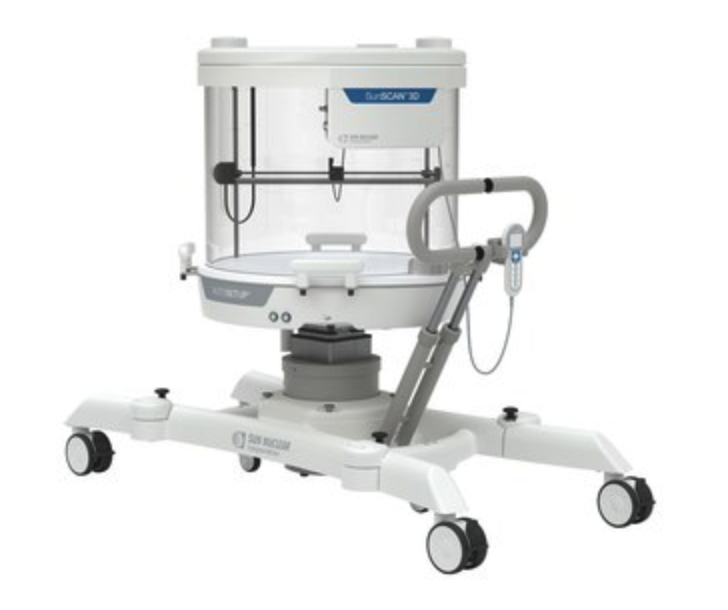Sun Nuclear Releases SunSCAN 3D Cylindrical Water Scanning System
 Sun Nuclear Corporation announced the release of the SunSCAN 3D cylindrical water scanning system for linear accelerator (linac) commissioning, beam scanning and annual quality assurance (QA) in radiation therapy. The SunSCAN 3D water scanning system is the latest addition to Sun Nuclear's comprehensive solutions portfolio for independent, integrated quality management of radiation therapy and diagnostic imaging. The SunSCAN 3D is currently pending CE Marking.
Sun Nuclear Corporation announced the release of the SunSCAN 3D cylindrical water scanning system for linear accelerator (linac) commissioning, beam scanning and annual quality assurance (QA) in radiation therapy. The SunSCAN 3D water scanning system is the latest addition to Sun Nuclear's comprehensive solutions portfolio for independent, integrated quality management of radiation therapy and diagnostic imaging. The SunSCAN 3D is currently pending CE Marking.
Building on the capabilities of the Sun Nuclear 3D SCANNER water tank, the SunSCAN 3D water scanning system introduces faster, easier workflows and hyper-accurate dosimetry. This system maintains the cylindrical tank design, which eliminates the need for medical physics teams to shift the tank and keeps detector orientation consistent. Users can be ready to scan in just 15 minutes, by simply rolling the tank in place, starting the filling process, and running the faster, more accurate AutoSetup routine.
To meet the increased prevalence of stereotactic treatment deliveries, the SunSCAN 3D system offers enhanced SRS accuracy of 0.1 mm throughout the 3D volume, and enhanced electrometer signal-to-noise ratios for these highly precise treatment deliveries.
New, intuitive SunDOSE software completes the SunSCAN 3D system for streamlined commissioning and annual QA workflows, with enhanced multi-tasking across the software program, easily optimizable scanning queues, and more.
"Commissioning and beam scanning are critical foundations in a strong Radiation Therapy program. Based on a decade of experience with our legacy water tank, we've made the new SunSCAN 3D water scanning system easier and faster for every user in the medical physics department," noted Eric Schloesser, Sun Nuclear President. "Plus, as stereotactic treatment deliveries continue to increase globally, it was fundamentally important that the new water scanning system be hyper accurate to meet the demanding needs of SRS and SBRT treatments."